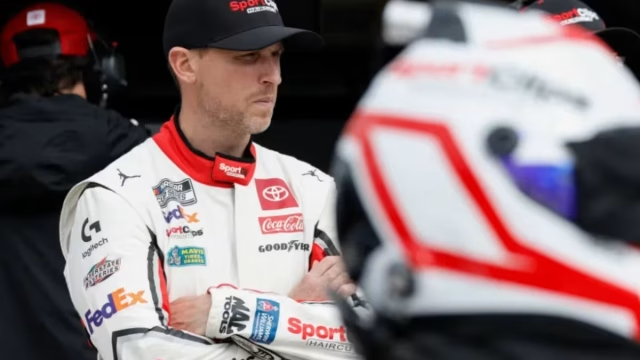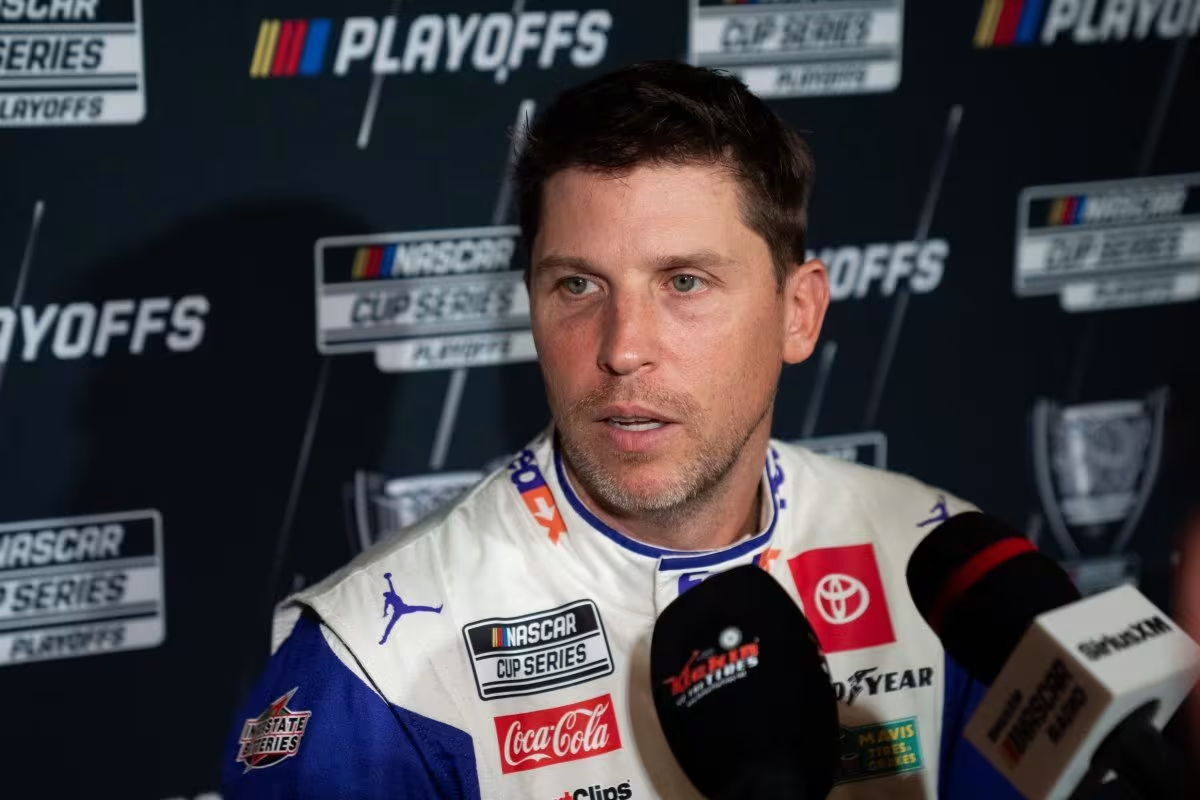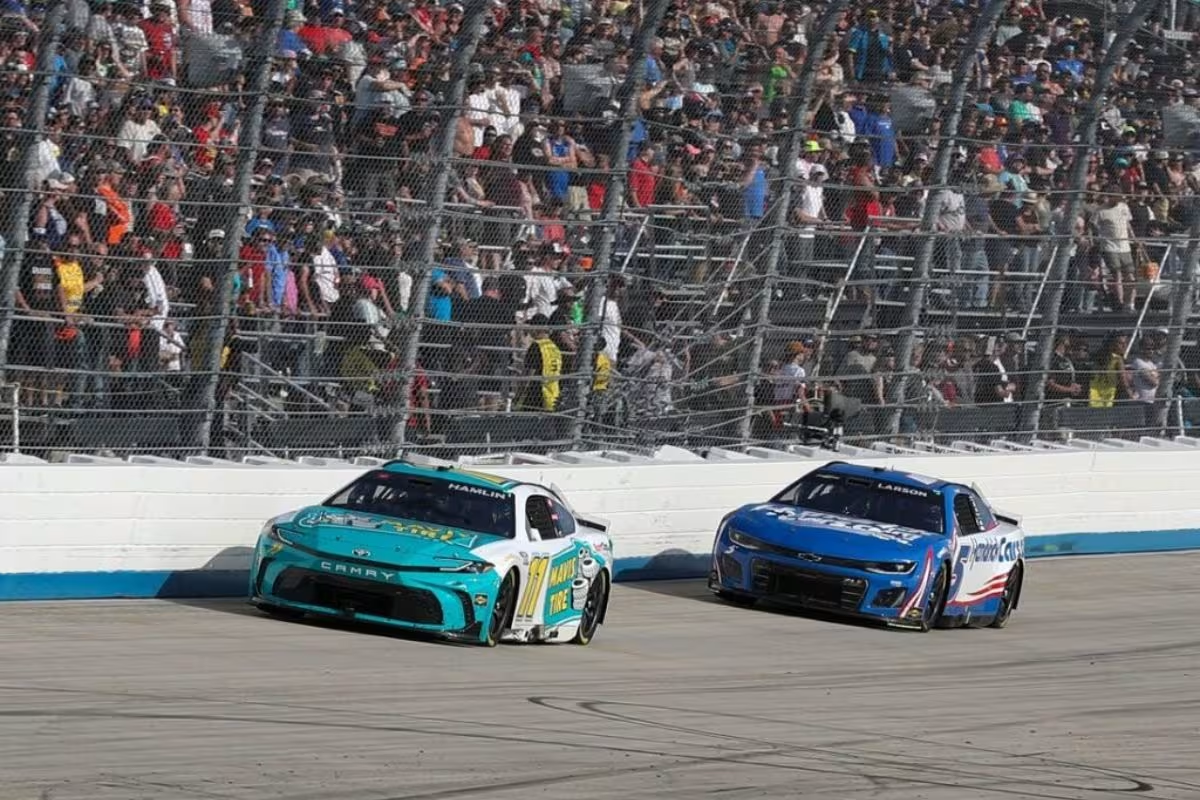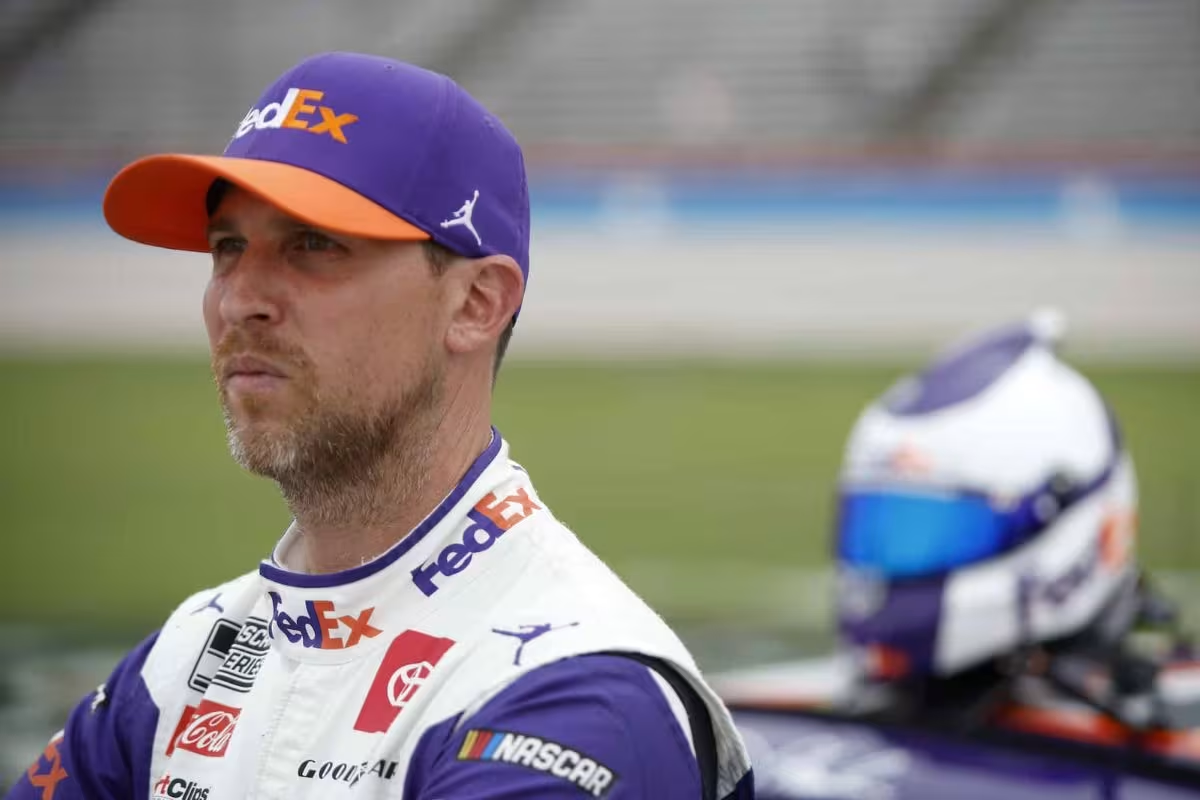Denny Hamlin and His Crew Chief Clash: Denny Hamlin‘s recent race at Kansas serves as a reminder of how pivotal pit crew performance is in the environment of NASCAR. The errors experienced during pit stops—ranging from slow tire changes to fuel miscalculations—not only cost valuable time but also greatly impacted Hamlin’s championship standing. This situation raises critical questions about the team’s operational consistency and the psychological toll of such setbacks on a driver poised for victory. As the season progresses, the implications of these mistakes on Hamlin’s championship aspirations warrant closer examination.
Key Highlights
- Denny Hamlin’s Kansas race was marred by significant pit crew errors, impacting his race position and championship points.
- Miscommunication during pit stops led to delayed tire changes and unnecessary additional stops, hindering race momentum.
- A malfunctioning right rear tire and a loose wheel further compromised Hamlin’s performance, dropping him to 15th place.
- Pit road inefficiencies have diminished Hamlin’s championship hopes, requiring flawless execution in upcoming critical races.
- Team dynamics and communication breakdowns highlight the need for improved cohesion and strategic adjustments to regain a competitive edge.
Denny Hamlin’s Strong Track Record and Today’s Challenges
Denny Hamlin’s impressive track record at Kansas has been characterized by remarkable consistency, evidenced by an average finish of 2.8 since the introduction of the Next Gen car. This statistic emphasizes his skill on this intermediate track, where tactical execution and driver talent converge to create a formidable challenge. Hamlin’s ability to consistently position himself among the top contenders not only reflects his racing expertise but also highlights the effectiveness of Joe Gibbs Racing‘s setup at Kansas.
However, today’s race sharply contrasted with his established record, revealing the delicate balance between driver performance and team execution. While Hamlin was primed to engage in a spirited contest with his former rival at Hendrick Motorsports, unforeseen complications arose from pit stops that marred his race strategy. The pit crew’s missteps disrupted what had been a well-oiled machine, leading to a cascade of challenges that hindered his competitive edge.
This deviation from his norm raises critical questions about the reliability of team execution under pressure. For a driver of Hamlin’s caliber, the expectation is not merely to finish in the top five but to contend for victories, particularly in a venue where he has historically excelled.
The contrast of his past successes with today’s tribulations serves as a reminder that racing is an intricate tapestry woven from both individual talent and collective team performance. As Hamlin reflects on this race, the implications for future contests are considerable; consistency must be a hallmark not only for the driver but also for the entire team.
Pit Road Troubles and Hamlin’s Frustration
How do unforeseen pit road troubles derail a promising race strategy? For Denny Hamlin, the Hollywood Casino 400 offered high hopes that quickly unraveled due to notable issues during pit stops. Despite starting strong and finishing 4th in Stage 1, his team faced hurdles that ultimately dashed any championship aspirations.
The pit road challenges can be summarized in three critical points:
- Slow Pit Stops: On lap 105, the JGR team encountered a slow pit stop, failing to execute efficiently. The right rear tire malfunction slowed down Hamlin’s momentum.
- Repositioning Errors: The necessity to jack the car back up to fix the tire compounded the delays, creating a frustrating cycle that impeded Hamlin’s race pace.
- Cumulative Impact: These ongoing issues contributed to a cascade of misfortune. Hamlin, who was aiming for a top finish, found himself dropping as low as 15th and ultimately finishing 8th.
Hamlin’s visible frustration post-race encapsulated the day’s misadventures, as he lamented, “Maybe the worst day ever. Just a terrible, terrible day.”
Denny Hamlin said he had a car to win the race but the issues on pit road kept him from challenging. He obviously was frustrated after the eighth-place finish: pic.twitter.com/e6ka70w1Dq
— Bob Pockrass (@bobpockrass) September 29, 2024
This sentiment highlights the critical nature of a well-functioning pit crew; when execution falters under pressure, even the most skilled drivers can find their championship hopes slipping away.
Loose Wheel and More Frustration
Amid the chaos of the Hollywood Casino 400, the loose wheel on the No. 11 car at the end of Stage 2 proved to be a crucial turning point that further compounded Denny Hamlin’s frustrations. This unexpected issue not only relegated Hamlin to the rear of the pack but also greatly diminished his chances of accumulating essential championship points.
The incident highlighted the precarious balance between speed and reliability in racing, where even minor mechanical failures can have devastating consequences.
As the race progressed, Hamlin’s frustrations mounted, culminating with a late-race spin involving Kyle Busch that further complicated the outcome. With only 30 laps remaining, the prospect of victory slipped further from Hamlin’s grasp, especially as he watched Ross Chastain take the lead.
Hamlin’s post-race remarks reflected a deep sense of discontent: “We should have won the race. We had the fastest car, but every time we get to the top 3, the caution comes out and we start 15th, 20th.” His lamentation highlights a crucial aspect of competitive racing—track position is paramount, and the inability to showcase the car’s true potential in the front of the pack is disheartening.
“We should have won the race. We had the fastest car, but every time we get to the top 3, the caution comes out and we start 15th, 20th. So can’t show how fast your car is back in the pack. All you can do is keep making positions, back up the car over and over and over….Eventually, just run out laps and somebody else wins.” – Hamlin
Ultimately, the combination of a loose wheel and tactical misfortunes prevented Hamlin from capitalizing on his car’s speed, reinforcing the harsh reality that in racing, success often hinges on a delicate interplay of skill, tactics, and luck.
Crew Chief Chris Gabehart’s Defense of the Team
In the wake of the tumultuous race at Kansas, crew chief Chris Gabehart defended his team’s performance, emphasizing the need for a balanced perspective amidst the chaos.
Despite the evident struggles faced by the No. 11 team, Gabehart’s response highlighted the complexities of racing, particularly under pressure. He acknowledged Denny Hamlin’s frustration but urged the importance of recognizing the multifaceted nature of the race.
“We had problems in one particular area of the car. But that had nothing to do with any kind of new or unique choreography. It’s the same stuff we’ve been doing all year. Just players have off days. I mean, you can see it in any pro sport.” – Gabehart
Gabehart outlined three key aspects to reflect upon when evaluating their performance:
- Emotional Balance: Acknowledging Hamlin’s feelings, Gabehart stressed the importance of maintaining emotional equilibrium within the team to foster resilience and focus on future races.
- Unpredictable Challenges: The race presented unforeseen obstacles, including a slow pit stop and a loose wheel, which disrupted their strategy. Recognizing these challenges emphasizes that racing is inherently unpredictable.
- Future Potential: Despite the setbacks, Gabehart remained optimistic about the team’s potential moving forward. He reiterated that even after notable issues, Hamlin had a chance to compete for a top finish, indicating that the team can rebound.
Gabehart’s defense serves as a reminder that success in NASCAR is rarely linear.
While frustrations are valid, they must be framed within the broader context of racing’s inherent trials. This perspective not only unifies the team but also lays the groundwork for future success.
Gabehart’s Perspective and Hamlin’s Playoff Standing
Despite the challenges faced during the Kansas race, Chris Gabehart maintained a pragmatic outlook regarding Denny Hamlin’s playoff standing. He characterized the performance issues as an “off day” rather than indicative of systemic failure, emphasizing that even elite teams encounter difficulties. Gabehart pointed out that the problems were localized to one specific area of the car, asserting that these issues did not stem from any recent changes to their established processes.
This perspective highlights the intricacies of motorsport, where human performance is often as unpredictable as mechanical reliability. Gabehart’s acknowledgment of the human element in racing—where extraordinary feats are demanded under pressure—speaks to the nature of competition. He defended his pit crew’s track record, highlighting their comprehensive excellence throughout the season.
“These are humans doing extraordinary things. They aren’t robots doing easy things. This is … this is hard. Humans don’t always perform their best and today was an off day for those guys. There’s a lot on the line and my group’s, on average, been the best pit crew on pit road all year. I’d put them up against anybody.”
His confidence in the crew is not merely an emotional response; it reflects a foundational belief in their capabilities, built through consistent performance metrics. While the Kansas race may have diminished immediate championship aspirations, Hamlin’s secure playoff position remains a silver lining.
The team’s ability to secure a top-ten finish, albeit not the victory they sought, enables them to maintain their competitive edge entering the playoffs. This resilience, coupled with Gabehart’s steadfast faith in his team’s competence, sets the stage for a renewed focus and determination in the upcoming races.
News in Brief: Denny Hamlin and His Crew Chief Clash
The recent pit crew errors during Denny Hamlin’s Kansas race have highlighted the vital importance of precision and communication in racing situations. These setbacks not only compromised race performance but also severely impacted championship aspirations. As the competition intensifies, addressing these operational deficiencies is fundamental for regaining a competitive edge. A thorough analysis of pit strategies and crew dynamics will be pivotal in restoring confidence and ensuring future success. The path forward demands steadfast commitment to excellence.
ALSO READ: Denny Hamlin’s Dramatic Championship Threat: The Fault He Can’t Ignore



